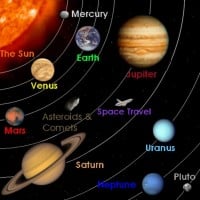Top 10 Weirdest Facts About the Planet Mercury
Greek form, Hermes, god of thieves, communication and a bunch of other things. As a planet, Mercury is kinda peculiar, to say the least, so here's another list about a planet, and boy might these facts surprise you.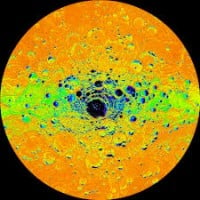
If you assumed Mercury is the hottest planet in our solar system, you're actually wrong. Mercury is a little weird, in terms of its temperature range. Yeah, it is a hot planet, for the most part, but its surface can still be relatively cold. This is because there's no atmosphere to trap heat. Without, temperature during the day can reach about 840 degrees Fahrenheit, but at night, the temperature can get as low as around 275 degrees Fahrenheit. That fluctuation makes a temperature swing of more than just hundreds of degrees Fahrenheit. This planet has the largest temperature swing in our entire solar system.
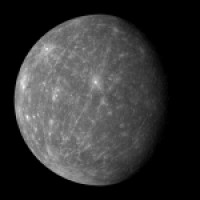
On earth, we're accustomed to the 24 hour day and 365 day year that we get on our planet. A day on Mercury is actually longer than a year. One day is defined by the amount of time it takes a planet to rotate on its axis, so on Mercury, one day is equal to 176 days on earth. A year is defined by how long it takes a planet to orbit the sun once, and on Mercury, a year is about 88 days on earth. So, as strange as it may be, a day on Mercury is twice as long as a year on Mercury. If you're still confused, about how that works, to be honest, I am, too, but let's just keep it simple and say that it's all about science.
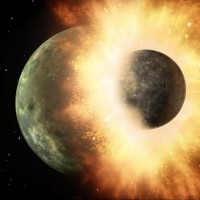
Roughly four billion years ago, an asteroid about sixty miles wide struck Mercury quite hard, and as a result, it made a gigantic crater about nine hundred and sixty miles wide. We call this impact crater the Caloris Basin, and you could fit all of Texas inside it. This asteroid hitting Mercury may have played a hand in the planet's peculiar rotation. Mercury is tidally locked with the Sun in a 3:2 spin orbit resonance. In other words, it rotates on its axis exactly three times for every two times it completes an orbit around the Sun.
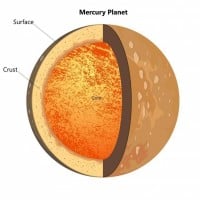
Mercury's core makes about seventy percent of the planet's radius. This gigantic core has more iron in it than any other planet's core in the entire solar system. Scientists aren't all on the same page, regarding how Mercury's core got so much iron, but lots think it has to do with solar magnetism. The Sun's magnetic field controlled certain materials, including iron, which were just kind of "there" when our solar system was new. Given how close Mercury is to the sun, when the planets came into existence, Mercury took in more iron than Venus, Earth, Mars, the gas giants, or Pluto. It's really all about gravity, distance from the sun, and the small amount of mass that Mercury is.
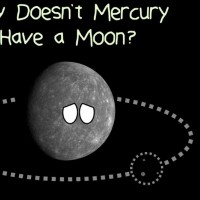
Most planets do have moons. Heck, even Pluto has two. But Mercury doesn't have a moon because it's too close to the sun. If Mercury had a moon, it would probably either crash into Mercury, and destroy both the planet and its moon, or the moon would perhaps go into orbit around the Sun and eventually get pulled into it. Mercury doesn't have a gravitational pull strong enough to hold anything in orbit around it. Especially given how tiny Mercury is, and how vast the sun is. Physics go against Mercury having a moon.
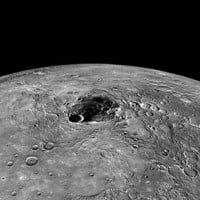
To be honest, in contrast with other facts on this list, this one isn't too weird. But it's weird nonetheless that the planet closest to the sun indeed has ice on it. As Mercury orbits the sun, some pockets of large craters don't receive direct sunlight, and they get cold. The cold areas have been cold for billions of years, enabling ice to be kept in its solid state, even though Mercury is the closest planet to the sun. As for how it got there, there are multiple potential answers. One is that the ice might have been brought to Mercury by comets coming from the outermost areas of the solar system, around where Pluto is.

How does this work, you ask? We calculate weight on other planets by
multiplying your mass by the gravitational pull on the surface of the planet, so for Mercury, you'd have the equation 3.285 × 10^23 kilograms, to determine your weight, and that's just around one third of your weight on earth. So a person who weighs 154 pounds on earth weighs 58.08 pounds on Mercury, or someone who weighs 222 pounds on earth weighs 83.73 pounds on Mercury.
Now that I think about it it's a little surprising the gravity is so low given that the planet has so much iron (which I thought would be denser than most rock).
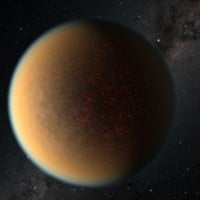
For the same reasons that it has no moon, Mercury has no atmosphere. Or if it does, it's a very weak one. For starters, Mercury is so close to the sun that a strong atmosphere would be burned up by the sun. It is also too small to have a strong gravitational pull on just about anything, including an atmosphere, therefore the atmosphere would be pulled off of the planet. Mercury also orbits the sun so quickly that an atmosphere would be blown off of it. And the speed at which Mercury rotates on its axis would also be at such a pace that an atmosphere would be stripped off of the planet, like a shirt.
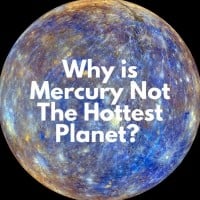
The hottest planet is actually Venus, mostly due to Mercury not having an atmosphere.
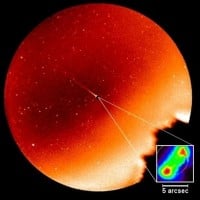
When I say a tail, I mean one from usually a comet. Magnetic tails are made when intense radiation pressure from solar winds push on, in this case, Mercury's magnetic fields. These tails are made on the side of the planet that is facing away from the sun. On Mercury, magnetic storms in its tail are much larger and more fast-paced than magnetic storms on Earth.
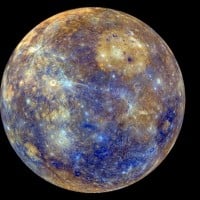
Unlike other planets that heal themselves through processes in nature, the surface of Mercury is scarred with craters. These craters were made by various close calls with asteroids and comets. Any crater larger that have at least 250 kilometers in diameter is dubbed as a Basin. The Caloris Basin, mentioned earlier on this list, is the largest impact crater on Mercury. It covers around 1,550 kilometers. But there are at least 413 other craters on Mercury
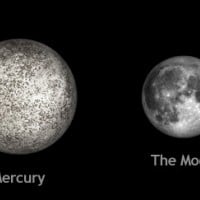
It's actually not much larger than earth's moon, although I personally still consider Pluto a planet despite it being classified as a dwarf planet in I believe 2007.
A fact that we all learned in kindergarten is weird? How did I not know that?!
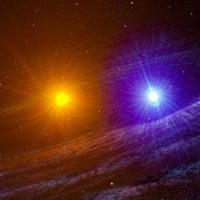
It was thought that mercury are just the two different object. The two objects are The Morning Star and The Evening Star
I believe the ancient Greeks thought it was two different stars, given how quickly it moves around the sun.
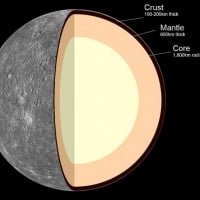
To be honest, just read what NuclearMetalPlant said. There's not much of a better way to explain it.
